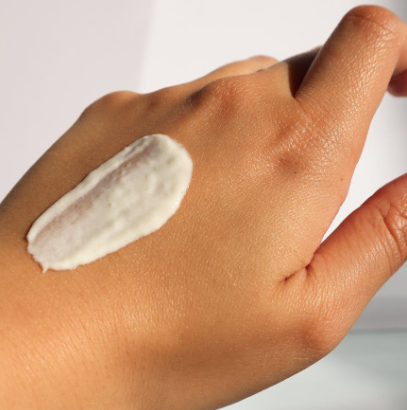Why protect your skin from the sun?
We all know this famous government advertising spot reminding us of "avoiding the sunniest hours between 12:00 and 4:00". He also reminds us of protecting children, covering himself with a hat and glasses, but the most important thing to renew the application of his sunscreen every 2 hours. So what is our sun protection for us?
Whether in winter, in summer, in the mountains or at the sea, the sun can be a source of well-being but also of problems. Indeed, the consequences of this daily exposure (see overexposition) without a minimum respect of simple rules can sometimes be synonymous with appearances of tasks, alteration of the skin barrier, burns, sunburn, rapid skin aging or even the development of skin cancers.
There are 3 types of ultraviolet rays (UV) emoted by the sun:
-
Uva
Responsible for short -term tan because they enter the cells of the skin in depth, at the same time activate free radicals and therefore the premature aging of the skin. -
UVB
More powerful than the UVAs, they represent only 5% of UVs but it is they who are responsible for your future sunburn (solar erythema): that is to say the destruction of thousands of cells. -
UVC
Type of UV which, arriving in the atmosphere, is partly absorbed, when the last rays arrives on you, the epidermis in stops the majority.
What does SPF mean?
FPS 10, 30 or 50 index? This is the question! Also known under the acronym SPF, it is visible in all supermarket, pharmacy, and parapharmacy rays as the days approach. THE Sun Protector Factor Or Sun protection In French, is available in several indices: the highest meaning higher protection in the face of the harmful effects of UV on your skin in the short and long term.
According to theoretical tests made by laboratories, the protection index would actually be a relationship between the time that your skin puts a sunburn with and without sunscreen; The sunscreen helping to delay redness.
In theory : if 15 minutes of sunshine allow you to develop the first redness then putting a SPF30 index will give the following calculation; 15 x 30 = 450 minutes or more than 7:30 am protection.
In Realite: Do not even think that a single application of index cream 30 or 50 in the morning spreads all the UV rays of the sun day that you are about to pass. It is proven that perspiration, heat, swimming alter the layer of sunscreen place on the skin previously. It is therefore absolutely necessary to put back sun protection every 2 hours In order to maximize your chances against sunburn, the eruption of pigment tasks and other inconveniences. Whether in the form of cream, spray, mist, BB cream, or solar oil, the key is the regularity of its application.
It should be remembered that a sunscreen protects the body and face from the sun's radiation, but not in full because it is only a filter. This is a good argument to use several protections against the sun at the same time, such as: wearing a hat and sunglasses, putting an anti-UV t-shirt, ...
Choose your sun protection according to your skin type
The UV index scale is important to know when you are exposed to the sun, it is represented by a scale of 1 to 11; The highest figure is therefore the most harmful index for the skin. The power of UV rays must be taken into account in the choice of your sun protection.
Knowing your skin type is also crucial in order to choose the suitable sun protection factor. We are not talking about oily skin, dry skin or mixed skin as in the "classic" skincare but rather a phototype: it represents your degree of sensitivity in the sun. Even by never heard this term, we are sure that you are already aware of your own phototype.
There are 6 phototypes:
-
I/ very white skin, person with blond or red hair with blue or green eyes. Frequent sunburn, no tan.
-
II/ Clear skin, person with blond hair, red, or chestnuts with green or brown eyes. Frequent sunburn, light tan.
-
III/ Pinkish skin, person with brown or brown hair with brown eyes. Sunburn occasionally, progressive tan.
-
IV/ Mate skin, person with brown or black hair with brown or black eyes. Rare sunburn, easy tanning.
-
V/ very matte skin, no one with black hair and black eyes. Rare sunburns, instant tanning.
-
VI/ black skin, nobody with black hair and black eyes. Non -existent sunburn.
People with phototypes I/ and II/ will favor a SPF50 and SPF50+index, phototypes III/ and IV/ will turn to SPF30 or SPF50 indices, while V/ and VI/ VI/ Phototys can afford lighter indices such as 'A SPF30 see SPF15. These recommendations represent the basis of sun protection, if you plan to exhibit during an afternoon shopping in town or for 2 weeks by the sea, this is the 50 protection index that you should think of.
Differences between mineral filter and chemical filter
At the moment, we hear a lot about solar protections with mineral filters; More ecological, more natural, more responsible, more effective, ... These are the different arguments in favor of this kind of sun protection. So is it worth it?
Sun protection with filters minerals Go have a reflective action in front of UV rays on the skin. The UVA and UVB rays will be repelled and not absorbed in the epidermis as is the case with chemical filters. Mineral filters are, for the majority, obtained from titanium dioxide or zinc dioxide. For mineral solar creams to be labeled organic, these 2 ingredients must be organic. It is at the level of the texture that you will see a notable difference; Thicker and often with a white finish, mineral sunscreens have a slightly lower application comfort than the others. However, their protection efficiency will be instantaneous, that is to say from their application. No more wait 30 minutes before you can immerse yourself under the sun!
As for solar filters creams chemicals, these are the ones that are most found in the rays, in all forms (cream, spray, oil) so that you enjoy a more pleasant experience when applying on your skin. Note that if this kind of cream is very widespread it is thanks to the wide choice of synthetic filters existing and because they are easy to formulate. The list of ingredients in the composition can be quite long and in particular contain nanoparticles, endocrine disruptors, other chemical elements, ... Certainly this sun protection will not leave you a white film on the skin and will be fluid in the touch but skins sensitive abstain.
If you are looking for a more natural alternative to chemical filters, turning to mineral filters will not only avoid contact with controversial ingredients but will also be beneficial for marine fauna and flora.
To help you in your choice, here is a small selection made in melāhuac
SPF50 Dailylily Paris day cream
Particularity = perfectly suited to pregnant women who wish to avoid developing a pregnancy mask (pigment tasks).
Particularity = Filters respectful of the oceans, enriched with jojoba oil and raspberry seeds.
SPF50 BIARRITZ SPF50 SPF50 SOLAR
Particularity = composition made of mineral filters and red algae extract which prevents cell damage and skin aging.


